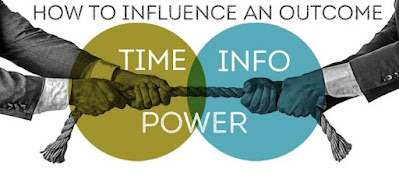
Dear Readers, We will continue with the story where we have left in Power Part 1.
So The guard ambles over and contemptuously grunts, “Whadda want?” . The Prisoner replies, “I’d like a cigarette, please … the kind you’re smoking: a Marlboro.“
The guard mistakenly perceives the prisoner as powerless, so he snorts derisively and turns his back.
The Prisoner Perceives his situation differently. He’s aware of his options; he’s willing to test his assumptions and take Risks. So he taps again on the door with the knuckles of his right hand, this time commandingly.
The guard exhaling a cloud of smoke, irritably turns his head, “Now whatddya want?“
The prisoner responds, “Please, I would like one of your cigarettes’ within the next 30 seconds. If I don’t get it, I’m going to bang my head against the concrete wall till I’m bloody mess and unconscious.
When the prison officials pick me off the floor and revive me, I’ll swear you did it.
“Now, they’ll never believe me, but think of all the hearings you’ll have to attend and the commissions you’ll be testifying before. Think of the reports you’ll have to fill out in triplicate. Think of the administrvia you’ll be tangled in- all that as opposed to giving me one crummy Morlboro! Just one cigarette, and I promise not to bother you again.“
Does the guard slip him a cigarette through the tiny port-hole? Yes. Does he light it for him? Yes. Why? Because the guard has done a fast cost-benefit analysis of the situation.
Whatever your circumstances, chances are that you’re in a better position than that prisoner tugging up his pants with his left hand. He wanted a Marlboro, and he got it. Within reason, you can get whatever you want if you’re aware of your options, if you test your assumptions, if you take shrewdly calculated risks based on solid information, and if you believe you have power.
The formula is almost Laughably Simple. Believe firmly that you have power, and you’ll convey that self-confident perception to others. It is you who determine how they see. believe, and react to you.
Succinctly stated, Power is their perception that you can, and just might, bring about intended effects that they believe might help them or hurt them. Although power, like beauty, is strictly in the eye of the beholder … it begins with you!
Speaking of Power being in the eye of the beholder, remember the motion picture. The Wizard of Oz? There’s an individual who exercises a lot of power in that film: the Great, Mighty, Powerful Wizard. He has Dorothy and her friends spending much of their time doing very dangerous things as they attempt to steal the broomstick belonging to the Wicked Witch of the West. They obediently risk their lives in pursuit of this goal because they think the Wizard has Power.
At the end of the film, when Toto, the dog, yanks the curtain back, who does the Wizard turn out to be? Just a bumbling old codger with a smoke machine and a noisemaker. In reality the old geezer had no power, but he exercised a great deal of power because everyone was convinced he had it.
Up to the unmasking, everyone else’s perception was based on the Wizard’s self-perception. Unlike the Wizard, you needn’t fake your power. You have more Power sources at you fingertips than you realize!
Well, Readers Next we will continue with the Power and it has 14 Subcategories :
- The Power of Competition
- The Power of Legitimacy
- The Power of Risk Taking
- The Power of Commitment
- The Power of Expertise
- The Power of Knowledge of “Needs”
- The Power of Investment
- The Power of Rewarding or Punishing
- The Power of Identification
- The Power of Morality
- The Power of Precedent
- The Power of Persistence
- The Power of Persuasive Capacity
- The Power of Attitude
We will discuss all 14 subcategories in detail, so, we will start with our 1st Point:
” The Power of Competition“
One thought on “Mastering Negotiation: Understanding the Three Crucial Variables for Success (Part 2)”